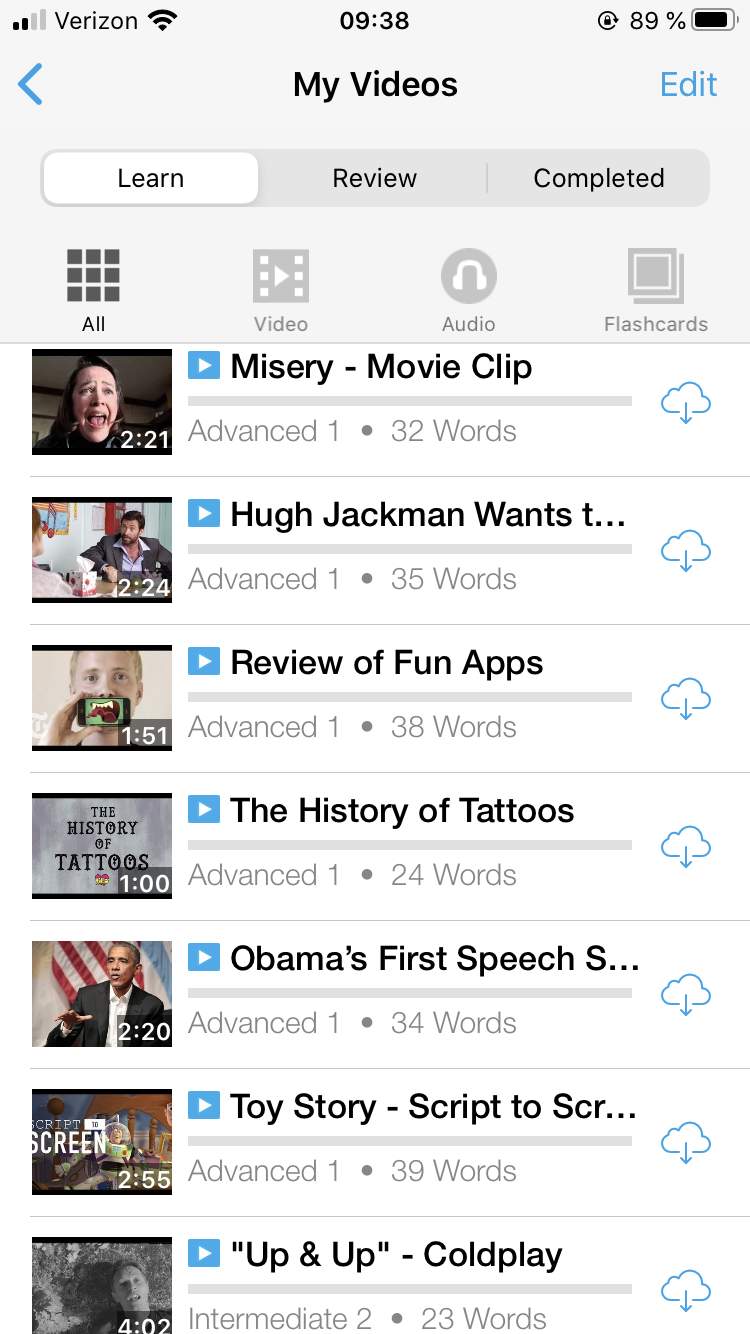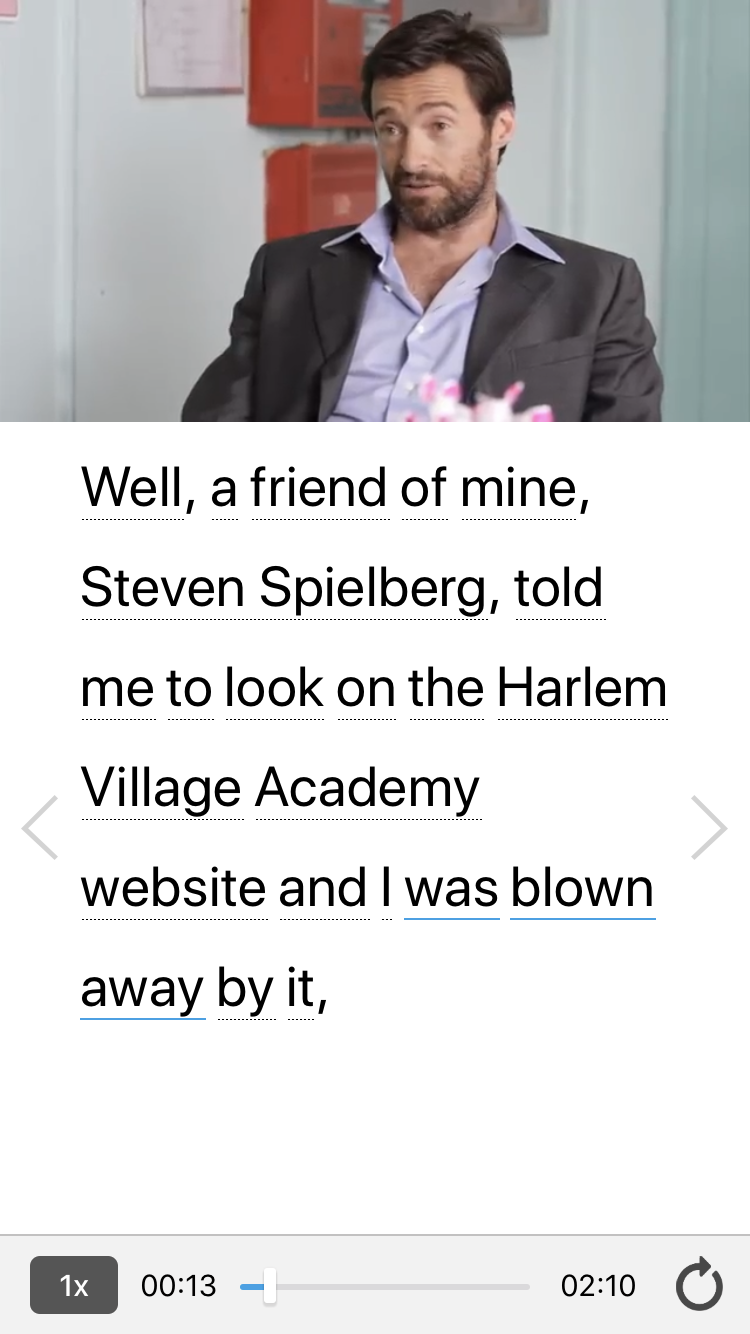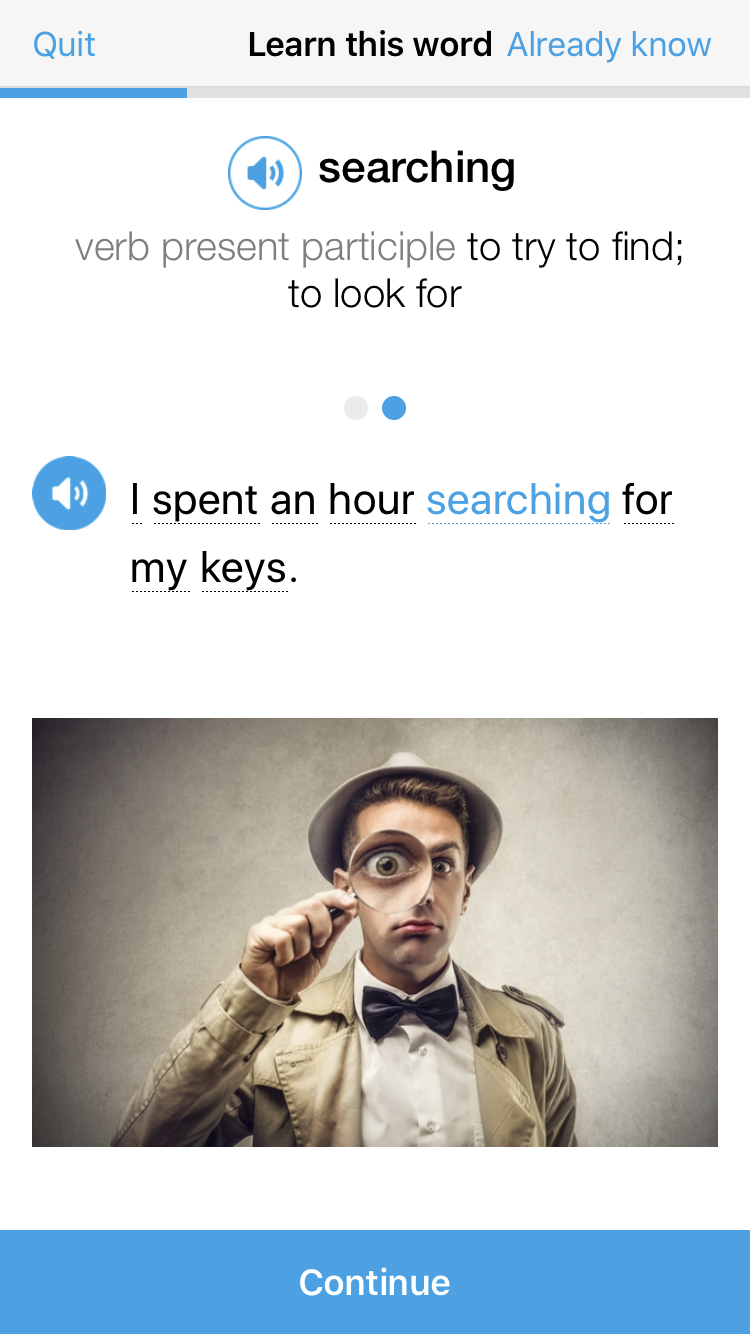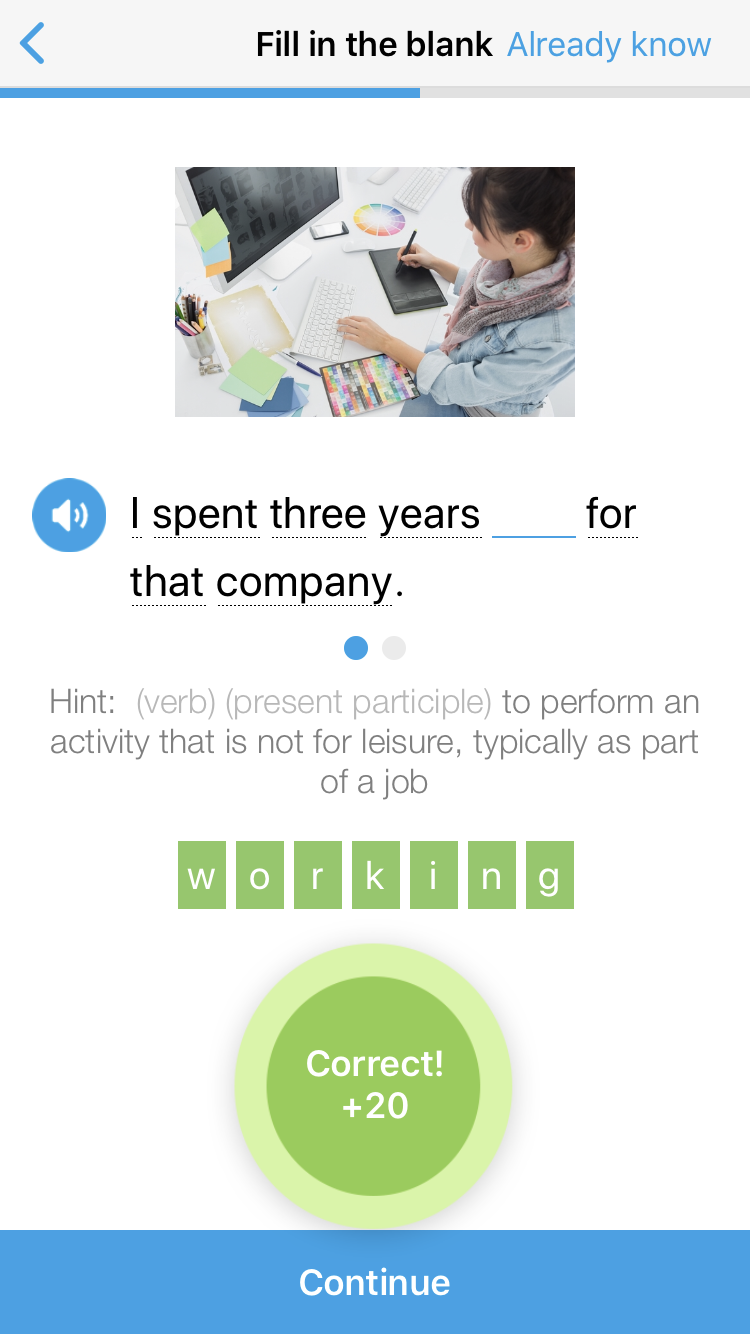Esl Spot the Differences in Pictures
They say a picture is worth a thousand words.
In TESOL, a picture can help produce a thousand words.
When it comes to your students' attitudes and motivation levels, having pictures can really make all the difference.
Otherwise unenthusiastic students get excited when they see new, visual materials enter the classroom.
Like, "hey — today's not going to be so boring after all!"
Rather than stressing over forming sentences properly in their own minds, students will breathe a collective sigh of relief.
It's just like coming to class armed with entertaining group games and fast-paced activities.
Now, we're going to look at why it's a good idea to use pictures and what you can do with them in class.
Download: This blog post is available as a convenient and portable PDF that you can take anywhere. Click here to get a copy. (Download)
What Kinds of Pictures Can I Use to Teach English?
In this blog post I use the term "pictures" to mean all the different kinds of visual material available to you as a teacher. There is so much material out there, it's almost a case of what not to use! Here's a short list of the pictures I'll be discussing today:
- photos
- drawings
- paintings
- illustrations
- symbols
- cartoons
- flashcards
- collages
- picture stories
- magazine ads
- newspaper and website illustrations
- stills from video (like those provided by FluentU)
- doodles
- Inkblot tests
- your own drawings and scribbles!
Why Use Pictures to Teach English?
When teaching a language, we have to attack it from all angles. This means that our homemade ESL lesson plans need to be engaging as many of the human senses as possible. By creating a classroom environment that mimics real life, we can get our students one step closer to using English outside class hours. Visuals help them imagine real world scenarios and react to them more naturally.
Many learners think that learning a language is hard or boring. Bringing pictures into the classroom somehow changes everything.
Pictures work their own magic for a number of reasons. Here are just a few:
1. Today's multimedia environment is very visually-oriented — from selfies to screenshots, pictures are everywhere. Using them is a natural aid to learning.
2. People learn in different ways. Visual learners often make up a large proportion of a class, so this immediately helps those students.
3. Pictures are stimulating, interesting and accessible to everyone.Everyone will pay attention and respond to a strong visual cue.
4. Babies learn through visuals. That means pictures are an excellent way to present and reinforce vocabulary, since you learn your native tongue in this way from babyhood.
5. Pictures are open to different interpretations. They can introduce a level of ambiguity which allows your students to be creative and invent all kinds of sentences structured around them.
6. Pictures provide a talking point. Your shy or insecure students will have something in front of them to talk about, meaning there will be less speaking-related anxiety in the class.
7. Pictures add a fun element to a lesson. They take people right back to carefree childhood days filled with cartoons and picture books!
8.They're great for practicing sub-skills.These secondary skills include like prediction, telling a story, recognizing key ideas and so on (as you'll see in a minute!)
Build Your Own Picture Collection
It's a good idea to start building your own collection of visuals, mounting them on cardboard or laminating them and adding lesson plans that you have used successfully.
These will become great emergency lessons when you have to cover at short notice too. However, don't get too caught up in the need to have professionally-produced pictures. I always say that a good language teacher should be able to teach on a desert island with just a stick and sand!
ESL Teaching Strategies: 10 Creative Ways to use Pictures for Describing and a Whole Lot More!

1. Prediction for Reading or Listening Activities.
Half the battle with a reading or listening text is to encourage educated guesses. Add these guesses to what is known and voilà – you have understanding.
Pictures help students with the guesses. They give a clue as to what is to come, what the main idea is and what is important.
Most newspapers, magazines and online articles have pictures to illustrate the main points, so use these as much as possible. If they don't have them, find your own. Before reading or listening, elicit a response from your class regarding the picture they're looking at. What does the picture show? What's happening? What might the text or audio be about? What words and situations does the picture bring to mind?
Use the picture successfully and the students will be desperate to read or listen to see how correct they were. In this context, desperate students are happy, eager-to-learn students!
2. Teaching Vocabulary.
When it comes to teaching vocabulary, the real thing (realia) is best. But, sadly, it's not always possible to bring a cow, an armored vehicle or an angel into class. That's where pictures come in. Flashcards, board drawings, stick and sand — anything will do, but help bring that word to life as best you can. This is both for teaching new words as a main aim and for pre-teaching essential vocabulary before a reading or listening text.
3. Word Association Pictures.
This accelerated learning mnemonics technique with pictures is to help remember a new word. (This works with a monolingual class where you speak the L2, or you can show a multilingual class the technique and then they can apply it to their own language.)
It works like this. Break the new word into syllables and, based on the sound, think of words in your own language for each syllable.
For example, in Italian, the word caterpillar is bruco. The two syllables remind me in English of "brook" and "oh." Now to remember the word, all I need do is draw these two things, plus the meaning, in a memorable picture. So, I can draw a sketch of a caterpillar falling into a brook while saying "oh"!
It sounds a bit silly, but it really does work. I can testify from personal experience!
4. Picture Dictation.
This is a variation on a normal dictation. Instead of reading out a text, you describe a picture that the students can't see. They draw what you say and, after checking their versions with a partner, they compare their versions with the original.
For example, this works great with lessons on prepositions. Say, "draw a table in the middle of the room, under the table is a cat…" and see what everyone comes up with. This can also be done in pairs with one student describing and another drawing, then the two change roles and keep playing.
5. Picture Stories.
For this you need sets of pictures which tell a story from beginning to end.
You'll need the same number of pictures in the story as students in the group, so groups of four students will need a story made of four pictures. If there is a group with an odd number, two students can share a picture.
Each member of the group in turn describes their picture without showing it. Once everyone has described their picture, they try and guess the correct order of the story and put the pictures face down in that order. Then they'll turn them over and see if they're right. They can then retell the story.
6. Spot the Difference.
This is the well-known game using two pictures with a number of differences between them. In this version, the students work with a partner. Each student has a picture, but they don't show their partner the pictures. They have to find the differences by talking to each other, describing their pictures and discovering what doesn't quite match up.
7. Choose the Best Picture.
The students read or listen to a text and then imagine they're picture editors. Give them a choice of several pictures. They have to choose the best picture to illustrate the story and justify it.
8. Memory Test.
Working in pairs, students have a limited time (e.g. 30 seconds) to look at a picture. Student A takes the picture and asks questions to see how much Student B can remember. Repeat with a different picture, and this time Student B asks while student A answers.
9. Pictionary.
In a version of this well-known game, students work in pairs or groups. They select a picture of an object face down and have to describe it to their partner without using its name. For example, if they've got a picture of a corkscrew they'll say something like: "this object is used for opening a bottle."
10. Personal Picture Treasure Map.
For homework, each student creates a collage of images either from their own photos or from magazines and online pictures. They then talk about their collage in pairs or groups.
When using pictures, it's always useful, depending on the level of the students, to teach phrases like "in the foreground," "in the background," "in the top left-hand corner" and so on.
Pictures add another dimension to any English lesson, making it memorable and fun. In short, pictures are invaluable additions to your teaching toolkit. Test them out and see what your students think.
I bet they'll be begging you to bring back the images and coloring materials for next class!
And One More Thing...
If you're looking for creative ways to teach English, then you'll love using FluentU in your classroom!
It's got a huge collection of authentic English videos that people in the English-speaking world actually watch regularly. There are tons of great choices there when you're looking for songs for in-class activities.
You'll find music videos, musical numbers from cinema and theater, kids' singalongs, commercial jingles and much, much more.

On FluentU, all the videos are sorted by skill level and are carefully annotated for students.
Words come with example sentences and definitions. Students will be able to add them to their own vocabulary lists, and even see how the words are used in other videos.

For example, if a student taps on the word "searching," they'll see this:

Plus, these great videos are all accompanied by interactive features and active learning tools for students, like multimedia flashcards and fun games like "fill in the blank."

It's perfect for in-class activities, group projects and solo homework assignments. Not to mention, it's guaranteed to get your students excited about learning English!
Sign up for a free trial and bring FluentU to your classroom today.
Download: This blog post is available as a convenient and portable PDF that you can take anywhere. Click here to get a copy. (Download)
If you liked this post, something tells me that you'll love FluentU, the best way to teach English with real-world videos.
Bring English immersion to your classroom!
Esl Spot the Differences in Pictures
Source: https://www.fluentu.com/blog/educator-english/esl-pictures/